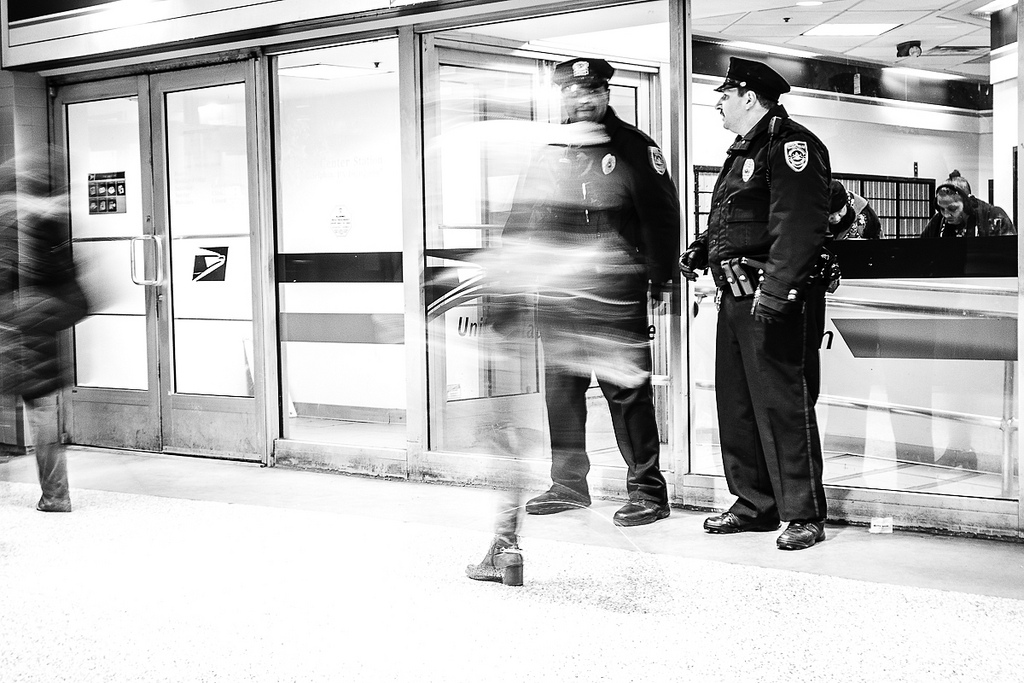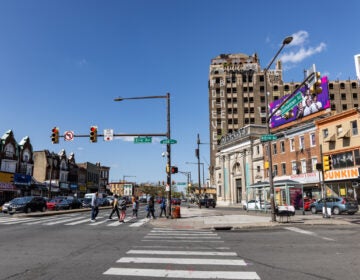Study suggests lower crime leads to less driving

Often, urban policies are presented as trade offs, a series of zero-sum games where the government can try to fix problem A or B, and improving one will have negligible effect on the other. We can have safer neighborhoods or we can increase the number of residents walking, biking and public transit, but we can’t afford to do both of these completely unrelated issues.
But a recent study from the Mineta Transportation Institute (MTI) at San Jose State University reminds us that the real world rarely forces such stark either/or distinctions, suggesting that as crime rates decline more individuals will walk, bike or ride public transit rather than drive.
The MTI study examined the impact of neighborhood level crime on transportation mode choice, finding that “violent crimes near a transit rider’s home deter them from walking or riding a bicycle to a transit stop and encouraged them to drive instead.”
The findings make intuitive sense: in high crime areas, people feel more exposed walking or bicycling than driving. Cars feel safer and less exposed. And in order to take the bus or train, most people need to walk to a stop or station first, and then wait.
“If you feel safe in to your neighborhood you will be more comfortable walking in it,” said Christopher Ferrell, the study’s lead author. “We’ve tried to test that idea and make sure the common sense works.”
The study compared localized crime data from the San Francisco Bay Area and Bay Area Rapid Transit 2008 Station profile surveys, along with urban form data and accessibility data to control for the factors more commonly associated with transportation mode choice, like distance from a transit stop.
The authors admit this was still a shallow look. Many individuals in high crime neighborhoods distrust the police. In areas where racial profiling or heavy-handed tactics have been prevalent, the risk of being detained or roughed up by police also factors into these mode decisions, just as surely as the decision to avoid walking down a dark alley for fear of crime.
The researchers don’t have the kind of data necessary to prove that, though. The crime data really acts as a proxy for the real issue: the feeling of safety.
“What we ideally wanted to work with wasn’t the number of crimes,” said Ferrell, “but the perception of crimes that people felt who lived there and how safe they felt. But that kind of data is almost impossible to get.”
In supporting their hypothesis, the researchers pointed to earlier studies suggesting that the presence and perception of crime significantly discouraged public transit ridership. In Los Angeles, crime was the most important deterrent against riding the bus, for example.
SEPTA’s ridership surveys, however, suggest that crime isn’t quite as large a factor. Those surveys, which measure customer satisfaction—not the same thing as asking why someone would avoid SEPTA—listed personal security as the least important factor for determining customer satisfaction. Instead, the most recent survey, from 2012, listed “convenience” as a bigger impact on overall customer satisfaction than any other factor.
But improving convenience is difficult, and often expensive. Building a new subway or trolley line, or extending an existing one, takes years and hundreds of millions of dollars. Even adding additional buses usually requires purchasing new vehicles and drivers to man them – investments that quickly add up to millions.
“The benefits of those [planning and infrastructure] efforts can take a really long time,” said Ferrell. “10-, 20-, 30-year time horizons.”
“That’s a long time to wait. Our interest here was to look at ways we can get, short-term bang for our buck in public investments,” Ferrell added, explaining that making neighborhoods feel safer would likely lead to more people walking, biking and taking transit.
The MTI study is an interesting inverse to a more common phenomena in social science, where some seemingly unrelated issue is examined for its impact on crime rates. Most famously, James Q. Wilson and George L. Kelling introduced the theory of Broken Windows policing in The Atlantic Monthly in 1982, arguing that small environmental queues – broken windows, cracked pavement, faulty lights – signal social indifference to transgressions against law and order, thereby encouraging petty crime, which itself inspires more serious felonies.
There have been other studies and other theories, looking at the impact on crime rates of improved schools, better transportation infrastructure, access to jobs, and even cleaner vacant lots. At best, like this study, most of these can only suggest at causality or show strong correlations – too often, the strength of findings are overstated.
As the debates over the societal ills of gentrification continue to rage on, and social science continues to fail to provide neat answers to such a messy question, perhaps it’s best to consider some simple, perhaps simplistic, common sense.
Whenever you make a place nicer in some way, you probably make it nicer in other ways, too. That might not help policymakers decide how to prioritize investments, but it might make their decisions easier to swallow.
WHYY is your source for fact-based, in-depth journalism and information. As a nonprofit organization, we rely on financial support from readers like you. Please give today.






